#onshore manufacturing
Explore tagged Tumblr posts
Text
Onshore vs. Offshore: Which is Better for Australian Brands?
Australian fashion brands face a crucial decision: should they manufacture garments onshore in Australia or offshore in countries like China and Vietnam? Onshore manufacturing offers advantages like better quality control, faster turnaround times, and sustainability. It’s ideal for high-end brands that value "Made in Australia" quality. However, offshore production presents significant cost savings, especially for large-volume orders, making it a more viable option for B2B and fast-fashion brands.
At Deepwear, we help Australian brands make informed decisions by connecting them with reliable manufacturers. Whether you're seeking cost-effective offshore options or premium onshore production, our team ensures ethical practices, quality control, and optimized logistics to support your brand's growth.
#onshore and offshore#onshore in australia#onshore manufacturing#offshore production#australian fashion brands
0 notes
Text
Oil and Gas Industry Podcasts to Follow in 2025
https://oilgasenergymagazine.com/wp-content/uploads/2024/12/17.-Oil-and-Gas-Industry-Podcasts-to-Follow-in-2025-Image-by-littlehenrabi-from-Getty-Images-.jpg
Source: Image by littlehenrabi from Getty Images
Category: Conventional Energy
The oil and gas industry has always been a dynamic sector, constantly evolving to meet the demands of the market, regulatory frameworks, and technological advancements. As we approach 2025, the landscape is set to change even further, making it crucial for professionals, enthusiasts, and newcomers to stay informed. One of the most effective ways to do this is through podcasts. They offer insights from experts, discussions on emerging trends, and a platform for sharing diverse perspectives.
Top Oil and Gas Industry Podcasts for 2025
1. The Energy Gang
Hosted by Stephen Lacey, Katherine Hamilton, and Jigar Shah, The Energy Gang is a weekly podcast that focuses on the latest news and trends in energy, including oil and gas. With in-depth discussions on policy, technology, and business strategies, this podcast is ideal for industry professionals looking to stay updated. The hosts feature interviews with industry leaders and engage in conversations about the future of energy, making it a must-listen among the oil and gas industry podcasts to follow in 2025.
2. Oil and Gas This Week

Oil and Gas This Week, hosted by Mark LaCour and Erin McCoy, provides a unique blend of news and insights from the oil and gas sector. Each episode covers the latest developments, trends, and challenges facing the industry. The hosts’ engaging style and informative content make it a popular choice among listeners. As the industry navigates changes in technology and market conditions, this podcast will remain relevant and insightful—making it one of the oil and gas industry podcasts to follow in 2025.
3. The Crude Life
If you’re looking for a podcast that delves deeper into the heart of the oil and gas industry, The Crude Life is an excellent choice. Hosted by Jason Spiess, this podcast covers a wide range of topics, from drilling technology to energy policies. Jason’s interviews with industry experts and field workers provide unique insights that can help listeners understand the complexities of the oil and gas market. As energy transitions gain momentum, this podcast will remain a key resource among the oil and gas industry podcasts to follow in 2025.
4. Energy Policy Now
For those interested in the intersection of energy and policy, Energy Policy Now is a must-listen. This podcast, produced by the Kleinman Center for Energy Policy at the University of Pennsylvania, features experts discussing the implications of various policies on the oil and gas industry. With episodes that cover everything from renewable energy initiatives to climate change regulations, this podcast equips listeners with the knowledge needed to navigate the evolving regulatory landscape. As policy continues to play a critical role in the industry, it’s one of the key oil and gas industry podcasts to follow in 2025.
5. The Gas Podcast

Focusing specifically on natural gas, The Gas Podcast offers listeners a comprehensive look at the gas sector. Hosted by Michael McNair and his team, this podcast provides insights into market trends, technologies, and challenges facing natural gas producers and consumers. With natural gas playing an increasingly significant role in the global energy landscape, this podcast is essential for anyone interested in the sector. As the industry shifts towards cleaner energy sources, it stands out as one of the oil and gas industry podcasts to follow in 2025.
Why Podcasts Are Essential for Industry Professionals
Podcasts have become an integral part of the oil and gas industry’s information ecosystem. Here are a few reasons why industry professionals should consider integrating podcasts into their learning routines:
1. Accessibility
Podcasts can be consumed on the go—whether you’re commuting, working out, or taking a break. This flexibility allows busy professionals to stay informed without sacrificing their time.
2. Diverse Perspectives
Podcasts feature a range of voices and viewpoints from industry leaders, experts, and grassroots workers. This diversity enriches understanding and fosters discussions about best practices and innovative solutions.
3. Real-Time Updates
With the oil and gas industry undergoing rapid changes, podcasts offer timely updates on current events, new technologies, and regulatory shifts. This real-time information can help professionals adapt their strategies effectively.
4. Networking Opportunities
https://oilgasenergymagazine.com/wp-content/uploads/2024/12/17.3-Networking-Opportunities-Image-by-filadendron-from-Getty-Images-Signature.jpg
Many podcasts encourage listener engagement through social media and other platforms. Engaging with hosts and fellow listeners can create networking opportunities, fostering connections that might lead to collaborative projects or job opportunities.
Conclusion
As we approach 2025, staying informed about the oil and gas industry is more important than ever. With a wide range of perspectives, timely updates, and expert insights, podcasts serve as a valuable resource for industry professionals. The podcasts highlighted in this article are just a few of the many that are shaping the conversation in the oil and gas sector.
Whether you’re a seasoned professional or a newcomer to the industry, make it a priority to explore these oil and gas industry podcasts to follow in 2025. By immersing yourself in these discussions, you’ll be better equipped to navigate the challenges and opportunities that lie ahead in this dynamic and ever-evolving field.
0 notes
Text
Onshore Wind Turbine(Above 2.5MW) Market Outlook, Demand, Benefits, Insights 2017 – 2032
Overview:
The onshore wind turbine market refers to the industry that involves the development, manufacturing, and installation of wind turbines with a capacity of 2.5MW or higher on land. These turbines are designed to harness the power of wind to generate electricity.
The onshore wind turbine market has experienced significant growth over the past decade due to increasing concerns about climate change, the need for renewable energy sources, and advancements in wind turbine technology. Onshore wind power is considered one of the most cost-effective and widely available sources of renewable energy.
Onshore Wind Turbine Market to surpass USD 19 billion by 2032 from USD 10.1 billion in the year 2022 at a CAGR of 7.8% throughout the forecast period 2022-32.
Industry Analysis:
The onshore wind turbine industry has become highly competitive with the participation of several key players. These companies are involved in various stages of the value chain, including turbine manufacturing, project development, and installation.
Revenue:
The revenue generated by the onshore wind turbine market has been steadily increasing. The exact figures may vary depending on the specific time period and geographic region considered. According to Stringent Datalytics reports, the global onshore wind power market was valued at around $60 billion in 2020 and is projected to grow at a compound annual growth rate (CAGR) of around 10% from 2021 to 2028.
Demand: The demand for onshore wind turbines has been steadily increasing due to several factors, including the global shift towards renewable energy sources, government incentives and policies supporting wind energy, and the growing awareness of environmental sustainability.
Key Trends:
Increased Turbine Size: One key trend in the onshore wind turbine market is the development of larger and more efficient turbines. Manufacturers are designing turbines with higher capacity and longer blades to capture more wind energy, increasing overall energy production.
Digitalization and Data Analytics: The industry is embracing digitalization and the Internet of Things (IoT) to improve the performance and maintenance of wind turbines. Data analytics and predictive maintenance techniques are being used to reduce downtime and enhance operational efficiency.
Hybrid Systems: Another trend is the integration of wind turbines with energy storage solutions, such as batteries. This allows for more consistent power generation and grid stability, making wind energy more reliable.
Local Manufacturing: To reduce costs and increase market competitiveness, some regions are emphasizing local manufacturing of wind turbine components, creating job opportunities and reducing transportation costs.
Sustainability and Recycling: Manufacturers are focusing on sustainability by developing recyclable materials for turbine components and exploring options for recycling and repurposing decommissioned turbines.
Products:
In the onshore wind turbine market, there are various types and designs of wind turbines. The choice of product depends on factors like wind conditions, available space, and project budget. Common types of onshore wind turbines include:
Horizontal Axis Wind Turbines (HAWTs): These are the most common type of onshore wind turbines, with blades that rotate around a horizontal axis. They are suitable for a wide range of wind speeds and are available in various sizes.
Vertical Axis Wind Turbines (VAWTs): VAWTs have blades that rotate around a vertical axis. They are often used in urban or constrained spaces and have unique design advantages.
Direct Drive Turbines: These turbines eliminate the need for a gearbox, reducing maintenance requirements and increasing reliability.
Geared Turbines: Geared turbines use a gearbox to increase the rotation speed of the generator. They are known for their efficiency and are often used in larger turbines.
Opportunities:
Market Growth: The global demand for renewable energy is expected to continue growing, providing significant opportunities for the onshore wind turbine market.
Emerging Markets: Developing countries are increasingly investing in wind energy, presenting new markets for turbine manufacturers and developers.
Technological Advancements: Continued innovation in turbine design, materials, and manufacturing processes presents opportunities to improve efficiency and reduce costs.
Collaboration and Partnerships: Collaborating with energy storage companies, grid operators, and government agencies can lead to integrated solutions and project opportunities.
Repowering: Upgrading and repowering older wind farms with newer, more efficient turbines is a growing market segment.
Offshore Expansion: While this focuses on onshore wind turbines, some manufacturers are exploring opportunities in the offshore wind market, which is expanding rapidly.
Sustainability Focus: Companies that prioritize sustainability in their operations and products are likely to attract environmentally conscious consumers and investors.
We recommend referring our Stringent datalytics firm, industry publications, and websites that specialize in providing market reports. These sources often offer comprehensive analysis, market trends, growth forecasts, competitive landscape, and other valuable insights into this market.
By visiting our website or contacting us directly, you can explore the availability of specific reports related to this market. These reports often require a purchase or subscription, but we provide comprehensive and in-depth information that can be valuable for businesses, investors, and individuals interested in this market.
“Remember to look for recent reports to ensure you have the most current and relevant information.”
Click Here, To Get Free Sample Report: https://stringentdatalytics.com/sample-request/onshore-wind-turbine%EF%BC%88above-2-5mw)-market/4331/
Market Segmentations:
Global Onshore Wind Turbine(Above 2.5MW) Market: By Company
• Vestas
• Ghrepower
• GE Energy
• Goldwind
• Siemens Gamesa
• ENESSERE SRL
• S&W Energy Systems
• HY Energy
• Ming Yang
• Envision
• Windey
• Dongfang
• CSSC
• Primus Wind Power
• Eocycle
• Nordex
• Bergey Wind Power
• Northern Power Systems
• Tozzi Nord Srl
• Xzeres Wind
Global Onshore Wind Turbine(Above 2.5MW) Market: By Type
• Horizontal Axis Wind Turbine
• Vertical Axis Wind Turbine
Global Onshore Wind Turbine(Above 2.5MW) Market: By Application
• Below 3 MW
• 3-4 MW
• Above 4 MW
Global Onshore Wind Turbine(Above 2.5MW) Market: Regional Analysis
All the regional segmentation has been studied based on recent and future trends, and the market is forecasted throughout the prediction period. The countries covered in the regional analysis of the Global Onshore Wind Turbine(Above 2.5MW) market report are U.S., Canada, and Mexico in North America, Germany, France, U.K., Russia, Italy, Spain, Turkey, Netherlands, Switzerland, Belgium, and Rest of Europe in Europe, Singapore, Malaysia, Australia, Thailand, Indonesia, Philippines, China, Japan, India, South Korea, Rest of Asia-Pacific (APAC) in the Asia-Pacific (APAC), Saudi Arabia, U.A.E, South Africa, Egypt, Israel, Rest of Middle East and Africa (MEA) as a part of Middle East and Africa (MEA), and Argentina, Brazil, and Rest of South America as part of South America.
Visit Report Page for More Details: https://stringentdatalytics.com/reports/onshore-wind-turbine%EF%BC%88above-2-5mw)-market/4331/
Reasons to Purchase Onshore Wind Turbine(Above 2.5MW) Market Report:
• To obtain insights into industry trends and dynamics, including market size, growth rates, and important factors and difficulties. This study offers insightful information on these topics.
• To identify important participants and rivals: This research studies can assist companies in identifying key participants and rivals in their sector, along with their market share, business plans, and strengths and weaknesses.
• To comprehend consumer behaviour: these research studies can offer insightful information about customer behaviour, including preferences, spending patterns, and demographics.
• To assess market opportunities: These research studies can aid companies in assessing market chances, such as prospective new goods or services, fresh markets, and new trends.
• To make well-informed business decisions: These research reports give companies data-driven insights that they may use to plan their strategy, develop new products, and devise marketing and advertising plans.
In general, market research studies offer companies and organisations useful data that can aid in making decisions and maintaining competitiveness in their industry. They can offer a strong basis for decision-making, strategy formulation, and company planning.
About US:
Stringent Datalytics offers both custom and syndicated market research reports. Custom market research reports are tailored to a specific client's needs and requirements. These reports provide unique insights into a particular industry or market segment and can help businesses make informed decisions about their strategies and operations.
Syndicated market research reports, on the other hand, are pre-existing reports that are available for purchase by multiple clients. These reports are often produced on a regular basis, such as annually or quarterly, and cover a broad range of industries and market segments. Syndicated reports provide clients with insights into industry trends, market sizes, and competitive landscapes. By offering both custom and syndicated reports, Stringent Datalytics can provide clients with a range of market research solutions that can be customized to their specific needs
Contact US:
Stringent Datalytics
Contact No - +1 346 666 6655
Email Id - [email protected]
Web - https://stringentdatalytics.com/
#Onshore Wind Turbine#Wind Energy#Renewable Energy#Wind Power#Large Wind Turbines#Sustainable Energy#Energy Generation#Turbine Technology#Wind Farm Development#Green Energy#Wind Turbine Market#Wind Turbine Trends#Wind Farm Investments#Wind Turbine Manufacturers#Energy Transition#Renewable Power Generation#Wind Turbine Efficiency#Wind Energy Infrastructure#Wind Turbine Innovation#Wind Turbine Maintenance.
0 notes
Text
Commentary - What will be the Construction trends in 2023
The following content was originally published February 2023 on IBM’s Category Insights Newsletter. Our end of year newsletter covered a lot of ground. First we looked at the market conditions for end-of-year for 2022. Then we considered which of those conditions were expected to have the greatest impact on the industry. We closed our newsletter with a look at what trends we expected to see…
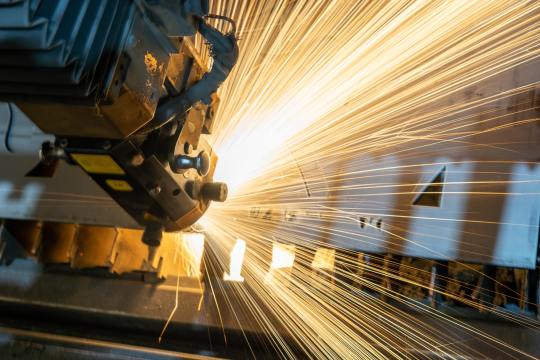
View On WordPress
#2023#collaborative contracts#Construction#manufacturing#market#onshoring#Procurement#supply chain#trends
0 notes
Text
Boeing’s deliberately defective fleet of flying sky-wreckage
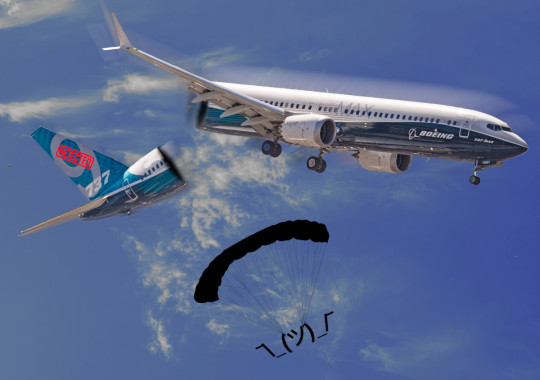
I'm touring my new, nationally bestselling novel The Bezzle! Catch me TOMORROW (May 2) in WINNIPEG, then Calgary (May 3), Vancouver (May 4), Tartu, Estonia, and beyond!

Boeing's 787 "Dreamliner" is manufactured far from the company's Seattle facility, in a non-union shop in Charleston, South Carolina. At that shop, there is a cage full of defective parts that have been pulled from production because they are not airworthy.
Hundreds of parts from that Material Review Segregation Area (MRSA) were secretly pulled from that cage and installed on aircraft that are currently plying the world's skies. Among them, sections 47/48 of a 787 – the last four rows of the plane, along with its galley and rear toilets. As Moe Tkacik writes in her excellent piece on Boeing's lethally corrupt culture of financialization and whistleblower intimidation, this is a big ass chunk of an airplane, and there's no way it could go missing from the MRSA cage without a lot of people knowing about it:
https://prospect.org/infrastructure/transportation/2024-04-30-whistleblower-laws-protect-lawbreakers/
More: MRSA parts are prominently emblazoned with red marks denoting them as defective and unsafe. For a plane to escape Boeing's production line and find its way to a civilian airport near you with these defective parts installed, many people will have to see and ignore this literal red flag.
The MRSA cage was a special concern of John "Swampy" Barnett, the Boeing whistleblower who is alleged to have killed himself in March. Tkacik's earlier profile of Swampy paints a picture of a fearless, stubborn engineer who refused to go along to get along, refused to allow himself to become inured to Boeing's growing culture of profits over safety:
https://prospect.org/infrastructure/transportation/2024-03-28-suicide-mission-boeing/
Boeing is America's last aviation company and its single largest exporter. After the company was allowed to merge with its rival McDonnell-Douglas in 1997, the combined company came under MDD's notoriously financially oriented management culture. MDD CEO Harry Stonecipher became Boeing's CEO in the early 2000s. Stonecipher was a protege of Jack Welch, the man who destroyed General Electric with cuts to quality and workforce and aggressive union-busting, a classic Mafia-style "bust-out" that devoured the company's seed corn and left it a barren wasteland:
https://qz.com/1776080/how-the-mcdonnell-douglas-boeing-merger-led-to-the-737-max-crisis
Post-merger, Boeing became increasingly infected with MDD's culture. The company chased cheap, less-skilled labor to other countries and to America's great onshore-offshore sacrifice zone, the "right-to-work" American south, where bosses can fire uppity workers who balked at criminal orders, without the hassle of a union grievance.
Stonecipher was succeeded by Jim "Prince Jim" McNerney, ex-3M CEO, another Jack Welch protege (Welch spawned a botnet of sociopath looters who seized control of the country's largest, most successful firms, and drove them into the ground). McNerney had a cute name for the company's senior engineers: "phenomenally talented assholes." He created a program to help his managers force these skilled workers – everyone a Boeing who knew how to build a plane – out of the company.
McNerney's big idea was to get rid of "phenomenally talented assholes" and outsource the Dreamliner's design to Boeing's suppliers, who were utterly dependent on the company and could easily be pushed around (McNerney didn't care that most of these companies lacked engineering departments). This resulted in a $80b cost overrun, and a last-minute scramble to save the 787 by shipping a "cleanup crew" from Seattle to South Carolina, in the hopes that those "phenomenally talented assholes" could save McNerney's ass.
Swampy was part of the cleanup crew. He was terrified by what he saw there. Boeing had convinced the FAA to let them company perform its own inspections, replacing independent government inspectors with Boeing employees. The company would mark its own homework, and it swore that it wouldn't cheat.
Boeing cheated. Swampy dutifully reported the legion of safety violations he witnessed and was banished to babysit the MRSA, an assignment his managers viewed as a punishment that would isolate Swampy from the criminality he refused to stop reporting. Instead, Swampy audited the MRSA, and discovered that at least 420 defective aviation components had gone missing from the cage, presumably to be installed in planes that were behind schedule. Swampy then audited the keys to the MRSA and learned that hundreds of keys were "floating around" the Charleston facility. Virtually anyone could liberate a defective part and install it into an airplane without any paper trail.
Swampy's bosses had a plan for dealing with this. They ordered Swampy to "pencil whip" the investigations of 420 missing defective components and close the cases without actually figuring out what happened to them. Swampy refused.
Instead, Swampy took his concerns to a departmental meeting where 12 managers were present and announced that "if we can’t find them, any that we can’t find, we need to report it to the FAA." The only response came from a supervisor, who said, "We’re not going to report anything to the FAA."
The thing is, Swampy wasn't just protecting the lives of the passengers in those defective aircraft – he was also protecting Boeing employees. Under Sec 38 of the US Criminal Code, it's a 15-year felony to make any "materially false writing, entry, certification, document, record, data plate, label, or electronic communication concerning any aircraft or space vehicle part."
(When Swampy told a meeting that he took this seriously because "the paperwork is just as important as the aircraft" the room erupted in laughter.)
Swampy sent his own inspectors to the factory floor, and they discovered "dozens of red-painted defective parts installed on planes."
Swampy blew the whistle. How did the 787 – and the rest of Boeing's defective flying turkeys – escape the hangar and find their way into commercial airlines' fleets? Tkacik blames a 2000 whistleblower law called AIR21 that:
creates such byzantine procedures, locates adjudication power in such an outgunned federal agency, and gives whistleblowers such a narrow chance of success that it effectively immunizes airplane manufacturers, of which there is one in the United States, from suffering any legal repercussions from the testimony of their own workers.
By his own estimation, Swampy was ordered to commit two felonies per week for six years. Tkacik explains that this kind of operation relies on a culture of ignorance – managers must not document their orders, and workers must not be made aware of the law. Whistleblowers like Swampy, who spoke the unspeakable, were sidelined (an assessment by one of Swampy's managers called him "one of the best" and finished that "leadership would give hugs and high fives all around at his departure").
Multiple whistleblowers were singled out for retaliation and forced departure. William Hobek, a quality manager who refused to "pencil whip" the missing, massive 47-48 assembly that had wandered away from the MRSA cage, was given a "weak" performance review and fired despite an HR manager admitting that it was bogus.
Another quality manager, Cynthia Kitchens, filed an ethics complaint against manager Elton Wright who responded to her persistent reporting of defects on the line by shoving her against a wall and shouting that Boeing was "a good ol’ boys’ club and you need to get on board." Kitchens was fired in 2016. She had cancer at the time.
John Woods, yet another quality engineer, was fired after he refused to sign off on a corner-cutting process to repair a fuselage – the FAA later backed up his judgment.
Then there's Sam Salehpour, the 787 quality engineer whose tearful Congressional testimony described more corner-cutting on fuselage repairs:
https://www.youtube.com/watch?v=PP0xhIe1LFE
Salehpour's boss followed the Boeing playbook to the letter: Salehpour was constantly harangued and bullied, and he was isolated from colleagues who might concur with his assessment. When Salehpour announced that he would give Congressional testimony, his car was sabotaged under mysterious circumstances.
It's a playbook. Salehpour's experience isn't unusual at Boeing. Two other engineers, working on the 787 Organization Designation Authorization, held up production by insisting that the company fix the planes' onboard navigation computers. Their boss gave them a terrible performance review, admitting that top management was furious at the delays and had ordered him to punish the engineers. The engineers' union grievance failed, with Boeing concluding that this conduct – which they admitted to – didn't rise to the level of retaliation.
As Tkacik points out, these engineers and managers that Boeing targeted for intimidation and retaliation are the very same staff who are supposed to be performing inspections of behalf of the FAA. In other words, Boeing has spent years attacking its own regulator, with total impunity.
But it's not just the FAA who've failed to take action – it's also the DOJ, who have consistently declined to bring prosecutions in most cases, and who settled the rare case they did bring with "deferred prosecution agreements." This pattern was true under Trump's DOJ and continued under Biden's tenure. Biden's prosecutors have been so lackluster that a federal judge "publicly rebuked the DOJ for failing to take seriously the reputational damage its conduct throughout the Boeing case was inflicting on the agency."
Meanwhile, there's the AIR21 rule, a "whistleblower" rule that actually protects Boeing from whistleblowers. Under AIR21, an aviation whistleblower who is retaliated against by their employer must first try to resolve their problem internally. If that fails, the whistleblower has only one course of action: file an OSHA complaint within 90 days (if HR takes more than 90 days to resolve your internal complaint, you can no have no further recourse). If you manage to raise a complaint with OSHA, it is heard by a secret tribunal that has no subpoena power and routinely takes five years to rule on cases, and rules against whistleblowers 97% of the time.
Boeing whistleblowers who missed the 90-day cutoff have filled the South Carolina courts with last-ditch attempts to hold the company to account. When they lose these cases – as is routine, given Boeing's enormous legal muscle and AIR21's legal handcuffs – they are often ordered to pay Boeing's legal costs.
Tkacik cites Swampy's lawyer, Rob Turkewitz, who says Swampy was the only one of Boeing's whistleblowers who was "savvy, meticulous, and fast-moving enough to bring an AIR 21 case capable of jumping through all the hoops" to file an AIR21 case, which then took seven years. Turkewitz calls Boeing South Carolina "a criminal enterprise."
That's a conclusion that's hard to argue with. Take Boeing's excuse for not producing the documentation of its slapdash reinstallation of the Alaska Air door plug that fell off its plane in flight: the company says it's not criminally liable for failing to provide the paperwork, because it never documented the repair. Not documenting the repair is also a crime.
You might have heard that there's some accountability coming to the Boeing boardroom, with the ouster of CEO David Calhoun. Calhoun's likely successor is Patrick Shanahan, whom Tkacik describes as "the architect of the ethos that governed the 787 program" and whom her source called "a classic schoolyard bully."
If Shanahan's name rings a bell, it might be because he was almost Trump's Secretary of Defense, but that was derailed by the news that he had "emphatically defended" his 17 year old son after the boy nearly beat his mother to death with a baseball bat. Shanahan is presently CEO of Spirit Aerospace, who made the door-plug that fell out of the Alaska Airlines 737 Max.
Boeing is a company where senior managers only fail up and where whistleblowers are terrorized in and out of the workplace. One of Tkacik's sources noticed his car shimmying. The source, an ex-787 worker who'd been fired after raising safety complaints, had tried to bring an AIR21 complaint, but withdrew it out of fear of being bankrupted if he was ordered to pay Boeing's legal costs. When the whistleblower pulled over, he discovered that two of the lug-nuts had been removed from one of his wheels.
The whistleblower texted Tkcacik to say (not for the first time): "If anything happens, I'm not suicidal."
Boeing is a primary aerospace contractor to the US government. It's clear that its management – and investors – consider it too big to jail. It's also clear that they know it's too big to fail – after all, the company did a $43b stock buyback, then got billions in a publicly funded buyback.
Boeing is, effectively, a government agency that is run for the benefit of its investors. It performs its own safety inspections. It investigates its own criminal violations of safety rules. It loots its own coffers and then refills them at public expense.
Meanwhile, the company has filled our skies with at least 420 airplanes with defective, red-painted parts that were locked up in the MRSA cage, then snuck out and fitted to an airplane that you or someone you love could fly on the next time you take your family on vacation or fly somewhere for work.

If you'd like an essay-formatted version of this post to read or share, here's a link to it on pluralistic.net, my surveillance-free, ad-free, tracker-free blog:
https://pluralistic.net/2024/05/01/boeing-boeing/#mrsa

Image: Tom Axford 1 (modified) https://commons.wikimedia.org/wiki/File:Blue_sky_with_wisps_of_cloud_on_a_clear_summer_morning.jpg
CC BY-SA 4.0 https://creativecommons.org/licenses/by-sa/4.0/deed.en
--
Clemens Vasters (modified) https://commons.wikimedia.org/wiki/File:N7379E_-_Boeing_737_MAX_9.jpg
CC BY 2.0 https://creativecommons.org/licenses/by/2.0/deed.en
#pluralistic#mrsa#Material Review Segregation Area#787#dreamliner#swampy#faa#marking your own homework#monopolies#AS9100#Cynthia Kitchens#Sam Salehpour#737 max#ntsb#David Calhoun#boeing#whistleblowers#aviation#safety#John Barnett#maureen tkacik#Patrick Shanahan
746 notes
·
View notes
Text
Excerpt from this story from Canary Media:
Three days before President Trump took office, an undersea-cable company abandoned plans to build a plant that would employ up to 350 people in Somerset, Massachusetts. Media outlets were quick to spotlight the loss as a specter of what’s to come for the offshore wind industry that Trump put on ice with the stroke of a pen last week.
It’s a reminder that Trump’s attempts to kill the offshore wind industry threaten not just the decarbonization plans of a few states, but job opportunities for a wide array of Americans. In fact, over 64% of the offshore wind manufacturing and supply-chain investments made or announced are in Republican congressional districts, according to data from industry group Oceantic Network.
The 64% statistic describes mostly private investment into offshore wind but also includes some public investment, including money flowing in from the Inflation Reduction Act, the Biden administration’s cornerstone climate law and a favorite target of Trump. In total, $3.4 billion has either been invested in or pledged to Republican districts to build a domestic offshore wind supply chain.
“Who’s benefiting? It’s the entire United States,” said Liz Burdock, president and CEO of the group, which previously went by the name Business Network for Offshore Wind.
But Trump last week signed an executive order that paused the approval of leases, permits, and loans for both offshore and onshore wind energy pending a federal review. The freeze will likely impact projects in earlier stages of development while the nine commercial-scale offshore wind projects that already have federal permits in hand appear safe.
It could also ripple throughout the emerging U.S. offshore wind supply chain. Developers have signed nearly 2,000 supply-chain contracts with manufacturing firms in 40 states, including some that are hundreds of miles from a coastline, like Ohio and Wisconsin.
For example, said Burdock, Italian shipbuilding firm Fincantieri is building customized offshore vessels in Sturgeon Bay, Wisconsin, which is part of a Republican congressional district. And in Houston, Texas — which she called the “engine” of offshore wind manufacturing — multiple companies are adapting technologies used for the region’s offshore oil operations to accommodate offshore wind.
America currently has 73 gigawatts of offshore wind capacity in various stages of development, according to the latest data collected by the American Clean Power Association. Before Trump returned to office, the industry group estimated that offshore wind would support 56,000 jobs by 2030. About a third of those would be operation and maintenance jobs while the vast majority would be direct construction jobs, at least in these early years of the sector.
Only one commercial-scale U.S. offshore wind project is in operation today, but at least five more are under construction, all off the coastlines of Northeastern states.
In addition to the money flowing to manufacturing projects to support these installations, Oceantic reports that offshore wind has spurred $1.8 billion worth of direct investments into updating 21 shipyards and across 12 states, like the St. John’s Ship Building shipyard in Palatka, Florida, which sits in a district that’s been represented by a Republican since 1989.
Thousands of workers are also helping to update 25 ports across the East, West and Gulf coasts that will store massive wind components and safely load them onto vessels that can then carry them miles out to sea for installation. Oceantic reports that a recent revitalization project at a Connecticut port created 400 construction jobs and sourced components from Texas.
7 notes
·
View notes
Text
Copper cannot be mined quickly enough to keep up with current U.S. policy guidelines to transition the country's electricity and vehicle infrastructure to renewable energy, according to a University of Michigan study. The Inflation Reduction Act, signed into law in 2022, calls for 100% of cars manufactured to be electric vehicles by 2035. But an electric vehicle requires three to five times as much copper as an internal combustion engine vehicle -- not to mention the copper required for upgrades to the electric grid. "A normal Honda Accord needs about 40 pounds of copper. The same battery electric Honda Accord needs almost 200 pounds of copper. Onshore wind turbines require about 10 tons of copper, and in offshore wind turbines, that amount can more than double," said Adam Simon, U-M professor of earth and environmental studies. "We show in the paper that the amount of copper needed is essentially impossible for mining companies to produce."
Read more.
18 notes
·
View notes
Text
“In his study of [the international coffee] market, scholar Joseph Nevins finds that the big changes occurring between the mid-1970s and the mid-1990s are related to the “longer-term struggle over the distribution of income related to the crop.” In the early part of this period, growers pulled in an average of around 20 cents for every dollar of coffee revenue. They were aided by an agreement called the International Coffee Accord (ICA) of 1962, which acted as a sort of cartel plan, constraining and arranging supply. In the wake of the Cuban Revolution, the Kennedy administration supported the ICA and its concessions to Third World workers as a Cold War tool to head off communist onshoring in the Western Hemisphere. But as the U.S. strategy changed, the country and its free-market Latin American proxies abandoned the ICA in 1989. The results were quick: By the mid-1990s, the grower share was down from 20 to 13 percent. Roasters, traders, and retailers in the drinking countries improved their share from 54 to 78 percent. That big, fast shift was partly thanks to repressed grower wages, partly thanks to repressed domestic service wages in the West, partly thanks to consolidation in the industry, and partly thanks to new high-priced coffee drinks. Starbucks went public in 1992, and if it seemed to be growing like a tech company in the ’90s, that’s because both thrived on the same social changes.
“Worsening conditions for workers in Mexico and in the rest of the Americas pushed people north, rapidly increasing the undocumented immigrant population in the United States. The Bracero program was over, but the jobs still needed doing. Caught in between employers who were hiring migrants and nationalist restrictionists, the Reagan administration legalized a few million undocumented workers while increasing border enforcement. Even though the vast majority of narcotics came into the country via legal ports of entry, conservatives and liberals alike framed border enforcement as a central front in the war on drugs. Increasing the costs of crossing couldn’t stanch the increase of people—they were responding to larger factors: Out-migration from Mexico’s coffee-producing areas increased after the dissolution of the ICA, for example. This tendency intensified after the North American Free Trade Agreement went into effect in 1994, pushing Mexico further toward cheap manufacturing exports and cheap imported American corn.
“The glut of cheap labor and commodities in this period undermined labor protections in the center as well as on the periphery, and the United States lost union jobs at a rapid clip. Reagan undermined the bulwark of government jobs by bringing Boulwarism to the White House. His signature incident occurred in his first year, when he fired more than 11,000 striking air traffic controllers and decertified their union. To the press, the president quoted an air traffic controller who quit the union and reported to work as ordered: “How can I ask my kids to obey the law if I don’t?” Once again, questions of individual criminality put the Reaganites on firm ground. Organized labor took to rearguard action, holding on to its institutions by agreeing to two-tiered contracts that reduced benefits and protections for new or future members. Capital shook off the midcentury labor agreement like a bad habit, reducing its accountability to its own workers the way it previously reduced accountability to the broader communities. The second part didn’t require as many votes.”
Malcolm Harris, Palo Alto
15 notes
·
View notes
Text
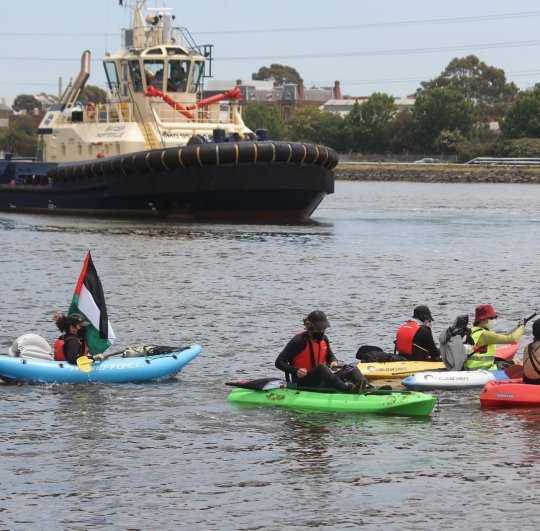


Yesterday (6/7 Dec) kayakers were able to successfully prevent the ZIM/ZIM Partnered ships from departing the dock for the day. Photos from Whistleblowers, Activists, and Communities Alliance (WACA).
Their media release, sent out while the action was taking place, reads:
A group of activists in kayaks has blocked the path of multiple container ships attempting to depart the Port of Melbourne this afternoon. The ships, the Dax, the Vanessa, and the Star, are currently unable to pass the protestors flotilla of around 40 vessels, which has created a line across the Yarra near the West Gate Bridge. The kayakers held Palestinian flags and were joined by a group of protestors onshore. The three ships are currently operating on ‘partner voyage’ arrangements with the israeli company ZIM. The Dax is owned by Contships Management Inc, and the Vanessa and Star are operated by the Mediterranean Shipping Company, who in September expanded their partnership agreement with ZIM to include further vessel sharing. Shams Moussa, a Palestinian activist, had this to say: “Australian politicians have Palestinian blood on their hands. Weapons and parts manufactured in Australia are shipped to israel using companies like Zim to commit evil acts of genocide, land theft and ethnic cleansing. Children have lost their families and homes, happiness has been bombed and burned. Yet, with each loss, a seed of resistance is planted, a determination to liberate and seek justice, that is the true Palestinian spirit.” Anna Angel, a Registered Emergency Nurse, said: “As a nurse, I have an ethical responsibility to denounce israel’s war crimes past and present. israel is targeting hospitals filled with nurses, doctors, healthcare workers and patients. ZIM and their partners Contship and MSC directly profit from the multi-trillion weapons trade that commodifies this loss of life, creating devastating impacts on human rights and on health outcomes.” Another protestor onshore, Elsa Tuet-Rosenberg, said: “As a Jewish educator, I applaud those taking action against the occupation. ZIM has a well-documented history of shipping weapons to israel. Targeting these ships costs israel money and, in tandem with actions all over the world, makes the occupation less viable. This has been a successful strategy in ending apartheid in South Africa. In recent months ZIM’s CEO Eli Glickman has pledged the use of the company’s ships and infrastructure to support the israeli government, with israeli security touted as the company’s ‘top priority.’”
21 notes
·
View notes
Text
i really just can't take any bidenomics reflection about how certain initiatives failed to influence voters seriously if the reflection fails to acknowledge the information crisis and the relative stupidity of the average swing voter--and i give less credence to any political analysis that refuses to frame "democratic failure" as even a little bit the result of republican opposition/electoral wins--
but this article's brief "to be fair" section about the accomplishments of the biden administration's major legislative victories was a neat summation and also sort of shows how rolling back parts of the IRA may not be easy or all that motivating for an already fractious and narrow-majority republican house:
Still, the market-making bills that did pass were momentous. To give credit where due: Biden’s green industrial policy was a technocratic tour de force. Learning from Obama’s fiscal timidity, his staffers understood that lightly nudging markets would not suffice to meet the climate crisis. This is because of what economists call a market failure. Developing foundational technologies is often initially prohibitively expensive, because of low immediate consumer demand or lack of economies of scale. Private investment is unlikely to take the risk—and needs a helping shove (and often some security) from the state. Bidenomics was that shove. The clean energy strategists Lachlan Carey and Jun Ukita Shepard have described the relationship between its three bills in anatomical terms. The CHIPS Act is the “‘brains’ of the operation,” underwriting billions to foundational research in energy biofuels, advanced battery technology, and quantum computing. The Infrastructure Act is the backbone, supporting not only traditional roads, ports, and water infrastructure but also clean hydrogen, low and zero-emission transit buses, and EPA Superfund projects to clean up contaminated sites. The IRA is the financial heart of the machine, subsidizing both the production and consumption of green technology. The lions’ share of federal spending has been directed at foundational research and development and the initial scaling up of markets—the stage, as Carey and Shepard put it, “where private markets are less likely to invest in research, development, demonstration, and early commercialization.”
Bidenomics also aims to onshore entire supply chains. For instance, the Section 45X Advanced Manufacturing Tax Credit supports the domestic production of components for wind and solar energy, battery development, and electric vehicles. Take solar panels: the credit offers $3 per kilogram for manufacturing polysilicon, which transforms sunlight into electricity. Companies turning that element into components for solar cells receive $12 per square meter. The next links up the chain receive credits—ranging from $40 to $70 per kilowatt—based on how much electricity their cells and panels produce. Along with a range of other subsidies for aluminum and other core components, these credits are projected to reduce the costs to producers of domestic solar by more than 40 percent, according to Advanced Energy United, a consortium of green energy businesses. They have been effective: the Bureau of Labor Statistics estimates that wind turbine service technicians and solar photovoltaic installers will be the fastest-growing occupations through 2033. As far as energy and component production goes, the IRA was responsible for some 646 energy projects (either announced or underway) that have produced 334,565 jobs as of August 2024. The Swiss firm Meyer Burger used 45X to complete building facilities in Goodyear, Arizona. The US manufacturer First Solar made a $450 million investment in a new R&D center in Perrysburg, Ohio, which they commissioned in 2024; hiring is underway for an estimated three hundred new positions to be filled this year. Perhaps most impressive, the South Korean corporation Qcells invested more than $2.5 billion on a solar-cell and module production facility in Dalton, Georgia—which anchors a region devastated by the decline of the textile industry. That campus employs two thousand full-time workers who produce 5.1 gigawatts worth of solar panels each year, the most of any site in the country.
Clean energy manufacturing requires semiconductors, which are the building blocks of solar cells as well as the digital components of wind turbines, electric vehicles, and advanced energy storage. Every electric vehicle contains between two to three thousand chips. As the pandemic shortage made clear, US industries relied overwhelmingly on foreign production. This is where the CHIPS Act came in. The legislation granted $50 billion to the Department of Commerce: $11 billion for semiconductor research and development and $39 billion for chip manufacturing and workforce training. The resulting surge of private investment has been impressive. According to the Financial Times, by April 2024 some thirty-one projects worth at least $1 billion had been founded since the act was passed, compared to just four in 2019. By that point the government had spent just over half of the act’s incentives. Since the election the Biden administration has been working to get the rest of the subsidies to businesses. Leading recipients include Intel, Taiwan Semiconductor Manufacturing Co. (TSMC), Samsung, and Micron. In December the commerce department announced that Texas Instruments could receive as much as $1.61 billion in direct CHIPS funding for projects in Texas and Utah. The department now predicts that by 2030 domestic markets could produce a fifth of the world’s chips; until very recently, the US produced none.
[...] The Trump administration could theoretically shut down many of Biden’s green initiatives. But the electoral benefits to Republicans would be unclear: most of the IRA’s recent projects are based in congressional districts with Republican representatives. It’s more likely that they will redirect subsidies to their districts and preferred businesses—including in the extractive sector—and brag about job growth. They are already at it. In 2023, when Kamala Harris appeared at the Qcells plant in Dalton, Representative Marjorie Taylor Greene accused her of “trying to take credit for jobs that President Trump and Governor Kemp created in Georgia back in 2019.”
2 notes
·
View notes
Text
The candidates are asked about Helene and how scientists say climate change made it worse. Vance is asked what the Trump administration would do to reduce the effect of climate change?
Vance says this disaster was Bad, and we have to help these communities. And Trump will do such a thing.
Re: Climate change, Trump and him support clean air and clean water, but carbon emissions — if they're true — can be solved by doing energy production here and onshoring manufacturing.
Walz's reponse is that yes, it was a horrific tragedy. He's worked together with governors nationwide, regardless of party. Trump says that climate change will lead to more beachfront property, yay. Meanwhile, MN farmers know that climate change is real, and they're trying to adapt. You can reduce climate change while creating jobs, which the Biden-Harris administration is doing.
5 notes
·
View notes
Text
Massive Deep-Sea Oil Discovery Ignites Global Energy Debate
https://oilgasenergymagazine.com/wp-content/uploads/2024/12/1-Massive-Deep-Sea-Oil-Discovery-Ignites-Global-Energy-Debate-Source-earth.com_.jpg
Source: earth.com
Category: News
A Game-Changing Discovery in the Gulf of Mexico
Talos Energy, a U.S.-based oil firm, confirmed reports of a significant deep-sea oil discovery in early September amid the bustle of the U.S. election season. The well, named EW 953, lies approximately 19,000 feet below the surface in the Gulf of Mexico, showcasing the vast untapped potential of the region. Preliminary estimates suggest that the well could produce between 8,000 and 10,000 barrels per day, a figure that has drawn considerable interest from industry experts and analysts.
Talos plans to connect the new well to its South Timbalier 311 Megalodon platform, a host facility it partly owns alongside Walter Oil & Gas, which holds a 56.7% stake. Talos itself maintains a 33.3% share, while Gordy Oil Company holds the remaining 10%. The project’s depth and complexity bring with it immense engineering challenges, significant financial investments, and undeniable risks.
Adding to the region’s momentum, Murphy Oil Corporation’s Sebastian project—a parallel deep-sea endeavor at a depth of 12,000 feet—is expected to yield between 6,000 and 10,000 barrels per day. Together, these projects could generate an estimated 15 to 25 million barrels of oil equivalent, valued at approximately $1.89 billion. Industry insiders believe these discoveries could reshape the Gulf of Mexico’s energy landscape and influence the global market.
Economic Impact and Market Speculation
Joe Mills, Interim President and CEO of Talos Energy, expressed optimism about the well’s potential, stating, “The well logged better than expected rock properties, which we believe should lead to a robust initial flow rate.” While immediate shifts in global oil prices are unlikely, the discovery has drawn the attention of energy analysts, traders, and policymakers.
New oil sources like EW 953 present opportunities to reduce dependency on imports and strengthen competitive positions in international markets. Located in a strategic energy hub, the well could play a critical role in shaping future global energy negotiations. Analysts also believe the project could offer economic boosts, such as job creation and regional investments, particularly in the Gulf’s local economies.
However, the challenges of deep-sea oil discovery cannot be ignored. The project’s success hinges on overcoming technical hurdles, ensuring safety compliance, and maintaining efficient operations. Unexpected geological complications, equipment delays, or shifting political and regulatory landscapes could impact timelines and costs.
Lessons from the Past and the Road Ahead
The Gulf of Mexico’s history with offshore drilling remains etched in public memory, particularly after the 2010 Deepwater Horizon disaster, which caused extensive environmental damage and eroded trust in deep-sea operations. Although advancements in safety protocols and spill prevention have since improved, new ventures like the Deep-Sea Oil Discovery at EW 953 inevitably evoke concerns about potential risks. Environmentalists and regulators are likely to keep a close watch on safety measures and emergency response plans to ensure history does not repeat itself.
As the project unfolds, Talos Energy’s discovery raises broader questions about the intersection of safety, environmental responsibility, and economic priorities. While the well’s potential is undeniable, its success—or failure—will depend on balancing these factors in a high-stakes energy market.
For now, the world waits to see how this deep-sea oil discovery will develop. Will it reshape global energy flows, or will it simply add to the existing supply mix? With production still a few years away, the answers remain uncertain, but the discovery has undeniably set the stage for a major shift in the energy sector.
0 notes
Text
Green Growth: Investing in Sustainable Energy Projects in India
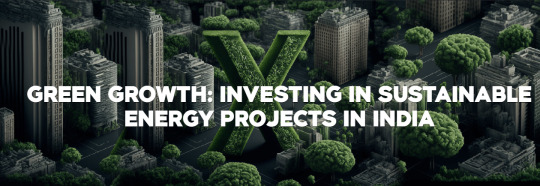
In recent years, India has emerged as a beacon of opportunity for investors looking to capitalize on sustainable energy projects. With a growing population, rapid urbanization, and increasing energy demand, the country presents a fertile ground for investments in renewable energy infrastructure. Foreign Direct Investment (FDI) in India's renewable energy sector has been steadily rising, driven by favorable government policies, technological advancements, and a shift towards cleaner energy sources. In this blog, we will delve into the prospects of investing in sustainable energy projects in India, focusing on the opportunities, challenges, and the role of FDI in driving green growth.
The Indian Energy Landscape: A Paradigm Shift towards Renewables
India's energy landscape has undergone a significant transformation in recent years, with a pronounced shift towards renewable sources. The government's ambitious target of achieving 450 gigawatts (GW) of renewable energy capacity by 2030 underscores its commitment to clean energy transition. This transition is fueled by-
1. Government Initiatives: Schemes like the National Solar Mission, Ujwal DISCOM Assurance Yojana (UDAY), and the Green Energy Corridor Project aim to boost renewable energy adoption and address infrastructure challenges.
2. Attractive Policies: The introduction of initiatives like feed-in tariffs, renewable purchase obligations, and tax incentives have created a conducive environment for renewable energy investments.
3. Technological Advancements: Advancements in solar, wind, and energy storage technologies have significantly reduced costs, making renewable energy more competitive with conventional sources.
4. International Commitments: India's commitment to the Paris Agreement and its pledge to reduce carbon emissions have further propelled the transition towards cleaner energy sources.
Opportunities for Investors
Investing in sustainable energy projects in India offers a myriad of opportunities across various segments of the renewable energy value chain:
1. Solar Power: India receives abundant sunlight throughout the year, making it an ideal location for solar power generation. Opportunities exist in utility-scale solar parks, rooftop solar installations, and solar panel manufacturing.
2. Wind Energy: With a vast coastline and favorable wind conditions, India has significant potential for wind energy projects. Onshore and offshore wind farms, along with wind turbine manufacturing, present lucrative investment prospects.
3. Hydropower: Despite challenges, hydropower remains an integral part of India's renewable energy mix. Investments in small and micro-hydro projects, pumped storage facilities, and modernization of existing hydropower plants offer avenues for growth.
4. Energy Storage: As the penetration of renewable energy increases, the need for energy storage solutions becomes paramount. Investments in battery storage, pumped hydro storage, and innovative grid-scale storage technologies are on the rise.
5. Electric Vehicle Infrastructure: The growing adoption of electric vehicles (EVs) necessitates investments in charging infrastructure, battery manufacturing, and renewable energy integration to support sustainable transportation.
Role of FDI in Driving Green Growth
Foreign Direct Investment plays a crucial role in accelerating India's transition towards sustainable energy:
1. Capital Infusion: FDI provides the necessary capital infusion required for developing renewable energy projects, especially in the initial stages where large investments are needed.
Here's a more detailed explanation:
Foreign Direct Investment (FDI) involves the investment of capital from foreign entities into projects or businesses in a host country. In the context of sustainable energy projects in India, FDI plays a crucial role in providing the necessary financial resources to develop renewable energy infrastructure. Here's how capital infusion through FDI contributes to the growth of sustainable energy projects:
1. Financial Support: Developing renewable energy projects, such as solar parks, wind farms, or hydropower plants, requires significant upfront capital investment. FDI provides access to substantial funds that may not be readily available from domestic sources alone. This infusion of capital enables project developers to finance the construction, installation, and operation of renewable energy facilities.
2. Risk Mitigation: Renewable energy projects often involve inherent risks, including regulatory uncertainties, technological challenges, and market fluctuations. FDI can help mitigate these risks by providing financial stability and diversification of funding sources. International investors bring in expertise in risk assessment and management, which enhances project resilience against potential financial setbacks.
3. Scaling Up Operations: The scale of renewable energy projects in India is increasing rapidly to meet the growing demand for clean energy. FDI facilitates the scaling up of operations by enabling larger investments in utility-scale projects and supporting the expansion of manufacturing facilities for renewable energy equipment. This scalability is essential for achieving economies of scale, driving down costs, and enhancing the competitiveness of renewable energy solutions.
4. Access to Global Markets: Foreign investors often have access to global capital markets, which allows Indian renewable energy companies to tap into international funding opportunities. FDI can facilitate partnerships, joint ventures, or strategic alliances with foreign firms, opening doors to new markets, technologies, and business opportunities. This cross-border collaboration fosters knowledge exchange, innovation, and best practices in sustainable energy development.
5. Project Viability: Many renewable energy projects in India require long-term investments with relatively lengthy payback periods. FDI provides patient capital that is willing to commit to projects over extended periods, enhancing project viability and sustainability. Additionally, foreign investors' participation in project financing enhances investor confidence, attracting further investments from domestic and international sources.
2. Technology Transfer: Foreign investors bring in expertise and technology advancements that enhance the efficiency and effectiveness of renewable energy projects in India.
Here's a detailed explanation:
Foreign Direct Investment (FDI) brings more than just capital; it also facilitates the transfer of advanced technologies and expertise from foreign investors to domestic entities. In the context of India's renewable energy sector, technology transfer through FDI plays a critical role in advancing the adoption and deployment of renewable energy solutions. Here's how technology transfer contributes to green growth:
1. Access to Cutting-Edge Technologies: Foreign investors often possess cutting-edge technologies, innovations, and best practices in renewable energy development and deployment. By partnering with or investing in Indian renewable energy projects, foreign firms transfer these technologies to local entities, thereby enhancing the efficiency, reliability, and performance of renewable energy systems.
2. Enhanced Research and Development (R&D): FDI stimulates research and development activities in the renewable energy sector by fostering collaboration between domestic and foreign entities. Joint R&D initiatives, technology-sharing agreements, and collaborative projects facilitate knowledge exchange and innovation diffusion. This collaboration accelerates the development of next-generation renewable energy technologies tailored to India's specific needs and conditions.
3. Capacity Building: Technology transfer through FDI contributes to the capacity building of domestic stakeholders, including project developers, engineers, technicians, and researchers. Through training programs, knowledge transfer sessions, and skill development initiatives, foreign investors empower local talent with the expertise and know-how required to design, implement, and maintain renewable energy projects effectively.
4. Adaptation to Local Context: While foreign technologies may be state-of-the-art, they often need to be adapted to suit local conditions, regulations, and infrastructure constraints. Through FDI, technology transfer is not merely about importing foreign solutions but also about customizing and contextualizing them to meet India's unique requirements. This process of adaptation ensures the practical applicability and scalability of renewable energy technologies in the Indian context.
5. Spillover Effects: The benefits of technology transfer extend beyond the immediate recipients of FDI to the broader renewable energy ecosystem. As domestic entities gain access to advanced technologies and knowledge, spillover effects occur, leading to the diffusion of innovations across the industry. This ripple effect catalyzes further innovation, competitiveness, and growth in the renewable energy sector, driving overall green growth in the economy.
3. Market Expansion: FDI contributes to the expansion of the renewable energy market by fostering competition, driving innovation, and improving project execution capabilities.
4. Job Creation: Investments in renewable energy projects create employment opportunities across the value chain, from manufacturing and construction to operations and maintenance.
5. Long-Term Sustainability: FDI promotes long-term sustainability by aligning investments with environmental, social, and governance (ESG) principles, thereby fostering responsible business practices.
Challenges and Mitigation Strategies
While the prospects for investing in sustainable energy projects in India are promising, several challenges persist:
1. Policy Uncertainty: Regulatory uncertainty and policy inconsistencies can deter investors. Clear and stable policies, coupled with transparent decision-making processes, are essential to instill investor confidence.
2. Infrastructure Constraints: Inadequate grid infrastructure and transmission bottlenecks pose challenges to renewable energy integration. Investments in grid modernization and infrastructure development are imperative.
3. Land Acquisition: Securing land for renewable energy projects can be a complex and time-consuming process. Streamlining land acquisition procedures and addressing land-use conflicts are critical.
4. Financial Risks: Fluctuating currency exchange rates, project financing challenges, and revenue uncertainties can impact project viability. Risk mitigation measures such as hedging strategies and financial incentives are vital.
5. Technical Challenges: Variability in renewable energy resources, technological limitations, and equipment reliability issues require continuous innovation and R&D efforts to address.
Investing in India’s sustainable energy projects holds immense potential for both domestic and foreign investors. With supportive government policies, technological advancements, and a growing market demand for clean energy, the sector offers attractive opportunities for long-term growth and impact. Foreign Direct Investment plays a pivotal role in driving green growth by leveraging capital, expertise, and technology to accelerate India's transition towards a sustainable energy future. Despite challenges, the collective efforts of stakeholders can unlock the full potential of renewable energy and pave the way for a greener, more resilient India.
This post was originally published on: Foxnangel
#green growth#sustainable energy#renewables energy#renewable energy green energy#sustainable energy projects#foreign direct investment#FDI#invest in india#foxnangel
2 notes
·
View notes
Text
#Global Wind Farm Operation Market Size#Share#Trends#Growth#Industry Analysis By Type ( Whole Machine Manufacturers#Wind Farm Subsidiaries#Third Party Companies )#By Applications( Onshore Wind Farm Operation#Offshore Wind Farm Operation )#Key Players#Revenue#Future Development & Forecast 2023-2032
0 notes
Text
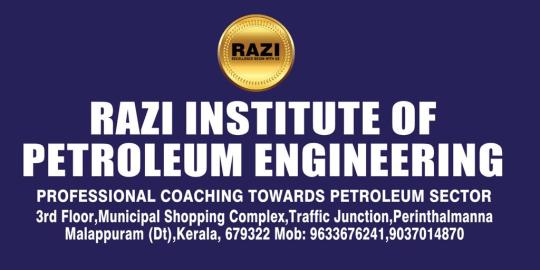




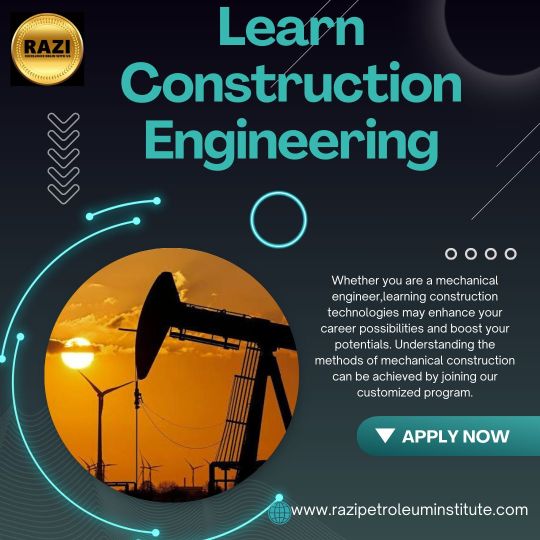




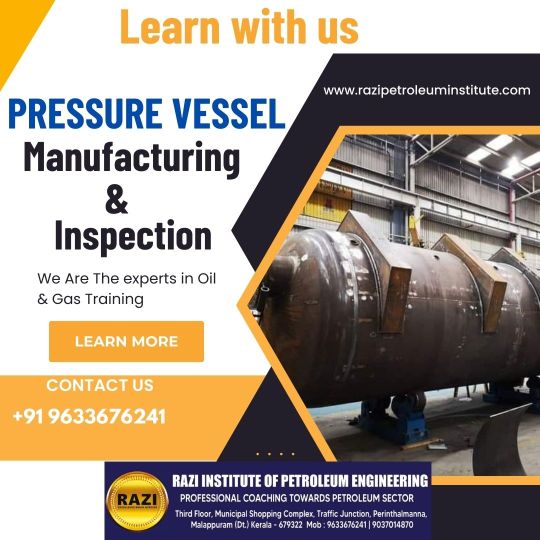



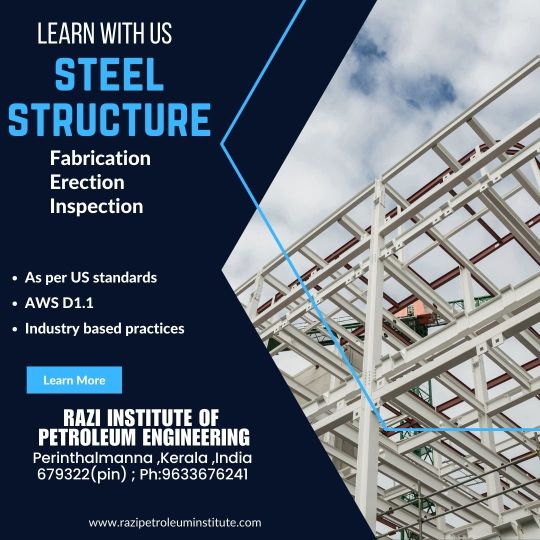















#career #education #ndt #qa qc #oil and gas
RAZI INSTITUTE OF PETROLEUM ENGINEERING is a dynamic, multi-dimensional, training & placement organization in the field of oil and gas, petroleum sector. We have evolved a unique blend of training programs, which are structured to provide effective career solutions to the youth. Our training programs includes oil and gas, quality assurance and quality control (QAQC), nondestructive testing (NDT), health, safety & environment (HSE),welding, piping, pressure vessel manufacturing, storage tank construction ,heat exchangers ,boilers, ship building ,offshore & onshore drilling ,pipeline construction , structural, painting ,coating, Insulation and more. RAZI INSTITUTE have direct contact with MNCs and private organizations for which we place our students. This not only helps us place students, but also structure the training programs to suit the needs of the corporate. RAZI have an eminent Advisory Board, which provides direction and guidance on the course design and developmental delivery process. Our primary strength is our ability to understand the aspirations, needs and potential of the youth and also committed to young generation.
2 notes
·
View notes
Text
What comes after neoliberalism?

In his American Prospect editorial, “What Comes After Neoliberalism?”, Robert Kuttner declares “we’ve just about won the battle of ideas. Reality has been a helpful ally…Neoliberalism has been a splendid success for the top 1 percent, and an abject failure for everyone else”:
https://prospect.org/economy/2023-03-28-what-comes-after-neoliberalism/
If you’d like an essay-formatted version of this post to read or share, here’s a link to it on pluralistic.net, my surveillance-free, ad-free, tracker-free blog:
https://pluralistic.net/2023/03/28/imagine-a-horse/#perfectly-spherical-cows-of-uniform-density-on-a-frictionless-plane
Kuttner’s op-ed is a report on the Hewlett Foundation’s recent “New Common Sense” event, where Kuttner was relieved to learn that the idea that “the economy would thrive if government just got out of the way has been demolished by the events of the past three decades.”
We can call this neoliberalism, but another word for it is economism: the belief that politics are a messy, irrational business that should be sidelined in favor of a technocratic management by a certain kind of economist — the kind of economist who uses mathematical models to demonstrate the best way to do anything:
https://pluralistic.net/2022/10/27/economism/#what-would-i-do-if-i-were-a-horse
These are the economists whose process Ely Devons famously described thus: “If economists wished to study the horse, they wouldn’t go and look at horses. They’d sit in their studies and say to themselves, ‘What would I do if I were a horse?’”
Those economists — or, if you prefer, economismists — are still around, of course, pronouncing that the “new common sense” is nonsense, and they have the models to prove it. For example, if you’re cheering on the idea of “reshoring” key industries like semiconductors and solar panels, these economismists want you to know that you’ve been sadly misled:
https://foreignpolicy.com/2023/03/24/economy-trade-united-states-china-industry-manufacturing-supply-chains-biden/
Indeed, you’re “doomed to fail”:
https://www.piie.com/blogs/trade-and-investment-policy-watch/high-taxpayer-cost-saving-us-jobs-through-made-america
Why? Because onshoring is “inefficient.” Other countries, you see, have cheaper labor, weaker environmental controls, lower taxes, and the other necessities of “innovation,” and so onshored goods will be more expensive and thus worse.
Parts of this position are indeed inarguable. If you define “efficiency” as “lower prices,” then it doesn’t make sense to produce anything in America, or, indeed, any country where there are taxes, environmental regulations or labor protections. Greater efficiencies are to be had in places where children can be maimed in heavy machinery and the water and land poisoned for a millions years.
In economism, this line of reasoning is a cardinal sin — the sin of caring about distributional outcomes. According to economism, the most important factor isn’t how much of the pie you’re getting, but how big the pie is.
That’s the kind of reasoning that allows economismists to declare the entertainment industry of the past 40 years to be a success. We increased the individual property rights of creators by expanding copyright law so it lasts longer, covers more works, has higher statutory damages and requires less evidence to get a payout:
https://chokepointcapitalism.com/
At the same time, we weakened antitrust law and stripped away limits on abusive contractual clauses, which let (for example) three companies acquire 70% of all the sound recording copyrights in existence, whose duration is effectively infinite (the market for sound recordings older than 90 is immeasurably small).
This allowed the Big Three labels to force Spotify to take them on as co-owners, whereupon they demanded lower royalties for the artists in their catalog, to reduce Spotify’s costs and make it more valuable, which meant more billions when it IPOed:
https://pluralistic.net/2022/09/12/streaming-doesnt-pay/#stunt-publishing
Monopoly also means that all those expanded copyrights we gave to creators are immediately bargained away as a condition of passing through Big Content’s chokepoints — giving artists the right to control sampling is just a slightly delayed way of giving labels the right to control sampling, and charge artists for the samples they use:
https://doctorow.medium.com/united-we-stand-61e16ec707e2
(In the same way that giving creators the right to decide who can train a “Generative AI” with their work will simply transfer that right to the oligopolists who have the means, motive and opportunity to stop paying artists by training models on their output:)
https://pluralistic.net/2023/02/09/ai-monkeys-paw/#bullied-schoolkids
After 40 years of deregulation, union busting, and consolidation, the entertainment industry as a whole is larger and more profitable than ever — and the share of those profits accruing to creative workers is smaller, both in real terms and proportionally, and it’s continuing to fall.
Economismists think that you’re stupid if you care about this, though. If you’re keeping score on “free markets” based on who gets how much money, or how much inequality they produce, you’re committing the sin of caring about “distributional effects.”
Smart economismists care about the size of the pie, not who gets which slice. Unsurprisingly, the greatest advocates for economism are the people to whom this philosophy allocates the biggest slices. It’s easy not to care about distributional effects when your slice of the pie is growing.
Economism is a philosophy grounded in “efficiency” — and in the philosophical sleight-of-hand that pretends that there is an objective metric called “efficiency” that everyone can agree with. If you disagree with economismists about their definition of “efficiency” then you’re doing “politics” and can be safely ignored.
The “efficiency” of economism is defined by very simple metrics, like whether prices are going down. If Walmart can force wage-cuts on its suppliers to bring you cheaper food, that’s “efficient.” It works well.
But it fails very, very badly. The high cost of low prices includes the political dislocation of downwardly mobile farmers and ag workers, which is a classic precursor to fascist uprisings. More prosaically, if your wages fall faster than prices, then you are experiencing a net price increase.
The failure modes of this efficiency are endless, and we keep smashing into them in ghastly and brutal ways, which goes a long way to explaining the “new commons sense” Kuttner mentions (“Reality has been a helpful ally.”) For example, offshoring high-tech manufacturing to distant lands works well, but fails in the face of covid lockdowns:
https://locusmag.com/2020/07/cory-doctorow-full-employment/
Allowing all the world’s shipping to be gathered into the hands of three cartels is “efficient” right up to the point where they self-regulate their way into “efficient” ships that get stuck in the Suez canal:
https://pluralistic.net/2021/03/29/efficient-markets-hypothesis/#too-big-to-sail
It’s easy to improve efficiency if you don’t care about how a system fails. I can improve the fuel-efficiency of every airplane in the sky right now: just have them drop their landing gear. It’ll work brilliantly, but you don’t want to be around when it starts to fail, brother.
The most glaring failure of “efficiency” is the climate emergency, where the relative ease of extracting and burning hydrocarbons was pursued irrespective of the incredible costs this imposes on the world and our species. For years, economism’s position was that we shouldn’t worry about the fact that we were all trapped in a bus barreling full speed for a cliff, because technology would inevitably figure out how to build wings for the bus before we reached the cliff’s edge:
https://locusmag.com/2022/07/cory-doctorow-the-swerve/
Today, many economismists will grudgingly admit that putting wings on the bus isn’t quite a solved problem, but they still firmly reject the idea of directly regulating the bus, because a swerve might cause it to roll and someone (in the first class seats) might break a leg.
Instead, they insist that the problem is that markets “mispriced” carbon. But as Kuttner points out: “It wasn’t just impersonal markets that priced carbon wrong. It was politically powerful executives who further enriched themselves by blocking a green transition decades ago when climate risks and self-reinforcing negative externalities were already well known.”
If you do economics without doing politics, you’re just imagining a perfectly spherical cow on a frictionless plane — it’s a cute way to model things, but it’s got limited real-world applicability. Yes, politics are squishy and hard to model, but that doesn’t mean you can just incinerate them and do math on the dubious quantitative residue:
https://locusmag.com/2021/05/cory-doctorow-qualia/
As Kuttner writes, the problem of ignoring “distributional” questions in the fossil fuel market is how “financial executives who further enriched themselves by creating toxic securities [used] political allies in both parties to block salutary regulation.”
Deep down, economismists know that “neoliberalism is not about impersonal market forces. It’s about power.” That’s why they’re so invested in the idea that — as Margaret Thatcher endlessly repeated — “there is no alternative”:
https://pluralistic.net/2021/11/08/tina-v-tapas/#its-pronounced-tape-ass
Inevitabilism is a cheap rhetorical trick. “There is no alternative” is a demand disguised as a truth. It really means “Stop trying to think of an alternative.”
But the human race is blessed with a boundless imagination, one that can escape the prison of economism and its insistence that we only care about how things work and ignore how they fail. Today, the world is turning towards electrification, a project of unimaginable ambition and scale that, nevertheless, we are actively imagining.
As Robin Sloan put it, “Skeptics of solar feasibility pantomime a kind of technical realism, but I think the really technical people are like, oh, we’re going to rip out and replace the plumbing of human life on this planet? Right, I remember that from last time. Let’s gooo!”
https://www.robinsloan.com/newsletters/room-for-everybody/
Sloan is citing Deb Chachra, “Every place in the world has sun, wind, waves, flowing water, and warmth or coolness below ground, in some combination. Renewable energy sources are a step up, not a step down; instead of scarce, expensive, and polluting, they have the potential to be abundant, cheap, and globally distributed”:
https://tinyletter.com/metafoundry/letters/metafoundry-75-resilience-abundance-decentralization
The new common sense is, at core, a profound liberation of the imagination. It rejects the dogma that says that building public goods is a mystic art lost along with the secrets of the pyramids. We built national parks, Medicare, Medicaid, the public education system, public libraries — bold and ambitious national infrastructure programs.
We did that through democratically accountable, muscular states that weren’t afraid to act. These states understood that the more national capacity the state produced, the more things it could do, by directing that national capacity in times of great urgency. Self-sufficiency isn’t a mere fearful retreat from the world stage — it’s an insurance policy for an uncertain future.
Kuttner closes his editorial by asking what we call whatever we do next. “Post-neoliberalism” is pretty thin gruel. Personally, I like “pluralism” (but I’m biased).
Have you ever wanted to say thank you for these posts? Here's how you can do that: I'm kickstarting the audiobook for my next novel, a post-cyberpunk anti-finance finance thriller about Silicon Valley scams called Red Team Blues. Amazon's Audible refuses to carry my audiobooks because they're DRM free, but crowdfunding makes them possible.
http://redteamblues.com
[Image ID: Air Force One in flight; dropping away from it are a parachute and its landing gear.]
#pluralistic#crypto forks#economism#imagine a horse#perfectly spherical cows of uniform density on a frictionless plane#neoliberialism#inevitabilism#tina#free markets#distributional outcomes#there is no alternative#supply chains#graceful failure modes#law and political economy#apologetics#robert kuttner#the american prospect
69 notes
·
View notes